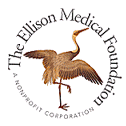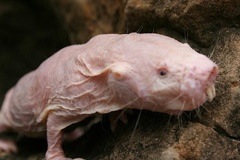Functional genomics of the naked mole-rat
This project focuses on the naked mole-rat (Heterocephalus glaber), a unique mammalian model of successful ageing and disease resistance. Heterocephalus is the longest-lived rodent, capable of living over 30 years (approximately 8 times more than similar-sized mice) with good health for most of its lifespan and an exceptional resistance to cancer. We have been developing various approaches, including genome and transcriptome sequencing as well as cell and molecular studies, to elucidate genes and mechanisms underlying the longevity, health maintenance and cancer resistance of Heterocephalus.

In one project, our goal is to develop genomic resources for Heterocephalus, clone and characterize selected Heterocephalus genes and ultimately create transgenic mice with Heterocephalus genes. This work was funded by a grant from the Ellison Medical Foundation to George Church (Harvard Medical School, USA) and a Marie Curie International Reintegration Grant within EC-FP7 to Pedro Magalhães (Liverpool, UK). Other collaborators include Shelley Buffenstein (San Antonio, USA), Chris Faulkes (London) and many other researchers.
Project Summary
Naked mole-rats can live over 28 years, significantly longer than similar-sized rodents like mice that do not commonly live more than 4 years. Naked mole-rats also appear to be very resistant to neoplasia. Because of these marked differences in longevity and age-related phenotypes between such similar species, genomic comparisons between them may provide clues about the genetic and molecular basis of species differences in aging. Therefore, the main goal of this project is the identification and characterization of naked mole-rat genes that contributed to the evolution of a long lifespan in this species.
Specifically, this projects aims to: 1) Establish genomic resources for studying naked mole-rats. We will create a library of 100kb bacterial artificial chromosomes and perform end sequencing of BAC clones that will serve as a resource for researchers studying these animals. 2) Clone and sequence candidate genes from naked mole-rats, including genes previously related to aging. We will study whether these genes may have been targets of selection or evolved putative new functional domains in naked mole-rats. 3) Study the functions of selected genes in cell culture using mouse stem cells by replacing the normal mouse gene, either the protein-coding or regulatory sequence, by the naked mole-rat homolog. 4) For the most promising candidates we will create 'knock-in' mice, in which we will assay if cellular alterations observed in vitro are also observed in vivo. Such knock-in mice will be exceptional models to study adaptations of naked mole-rats related to aging and age-related diseases like cancer.

